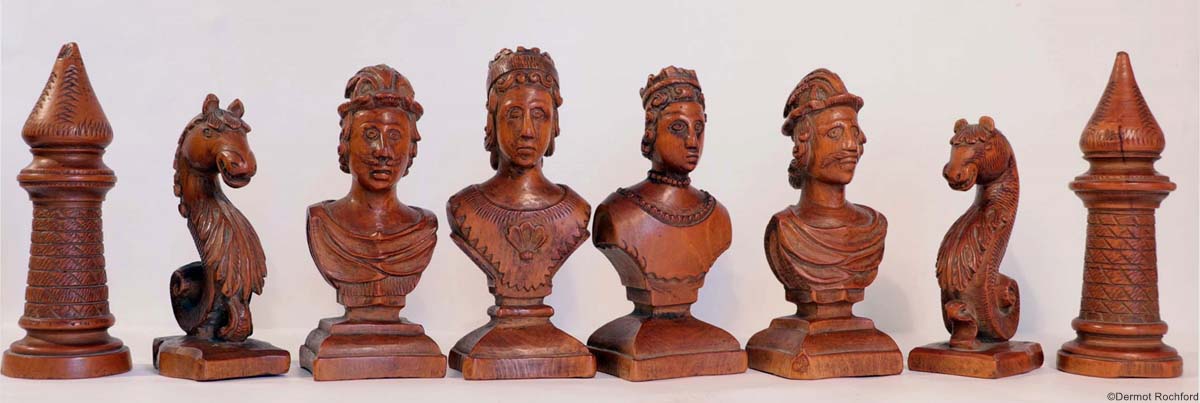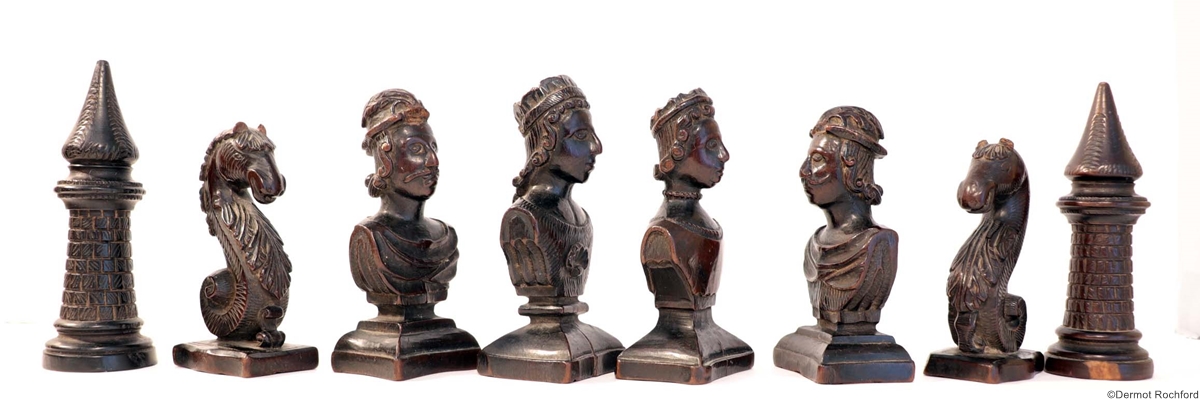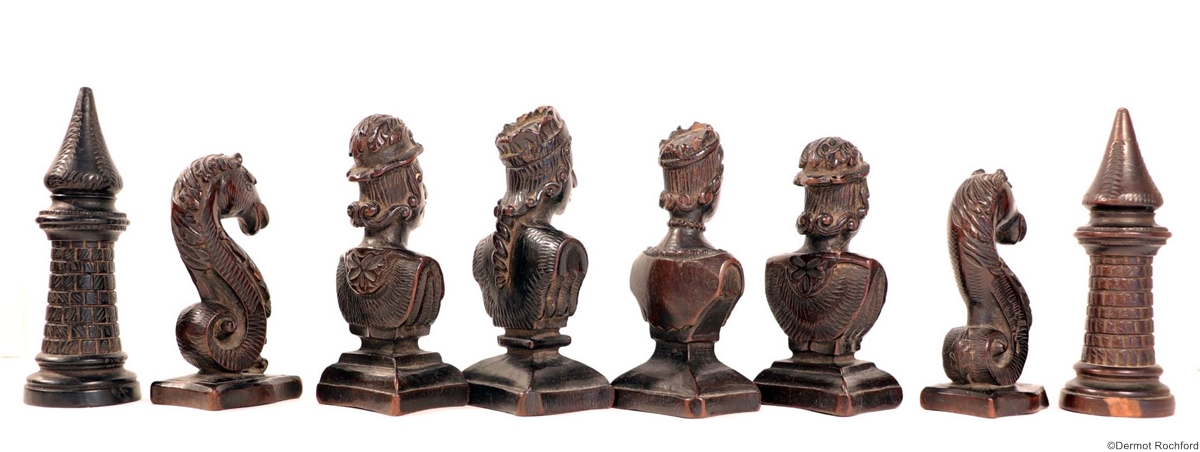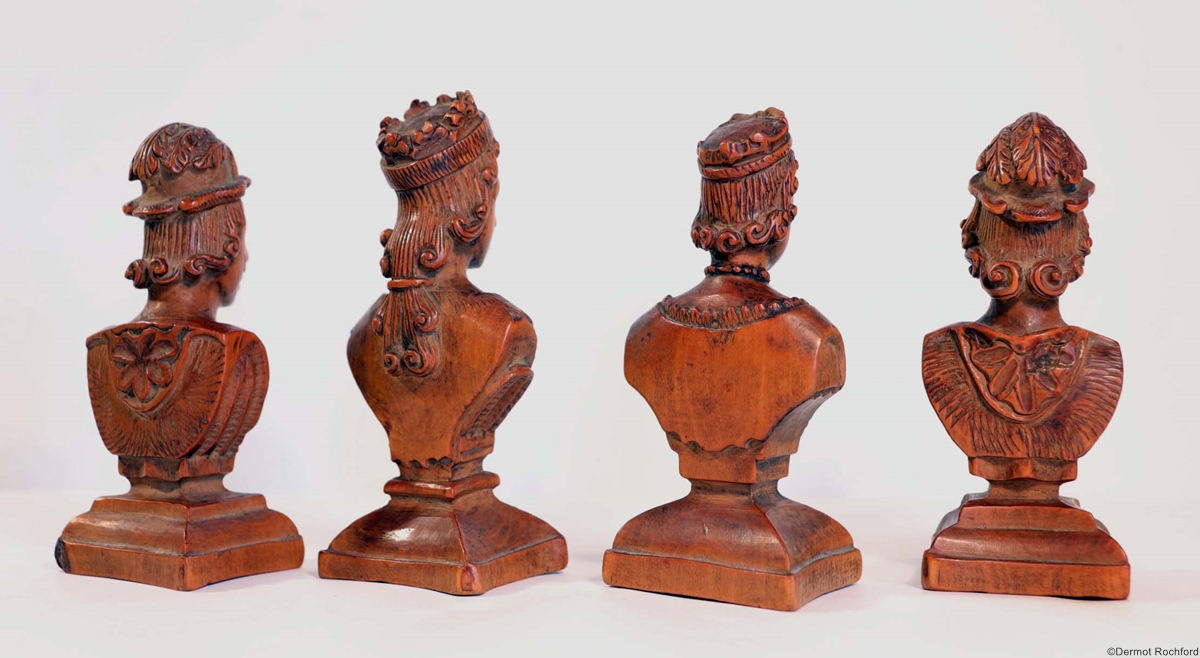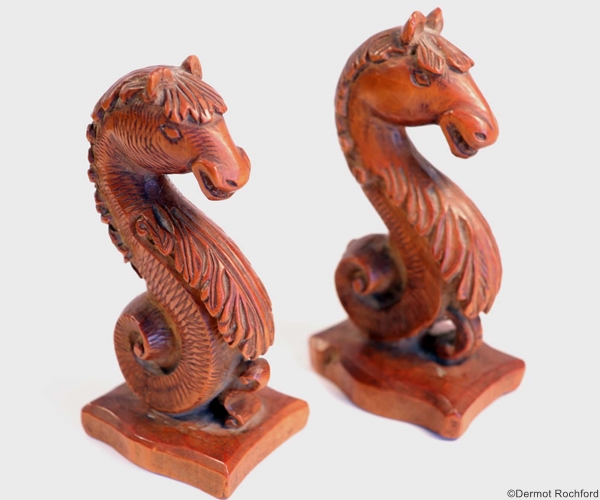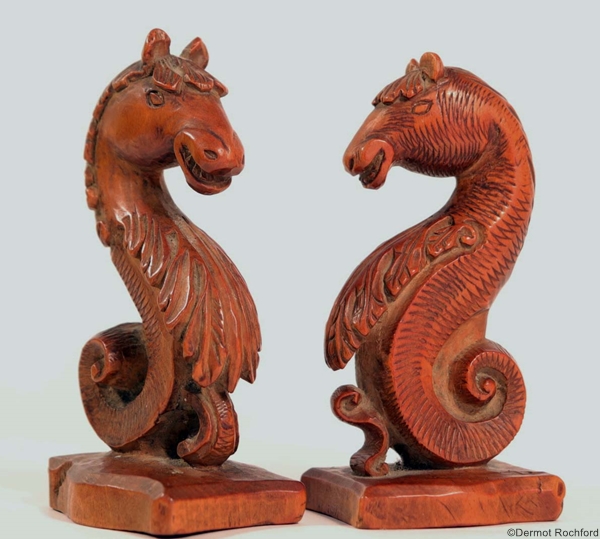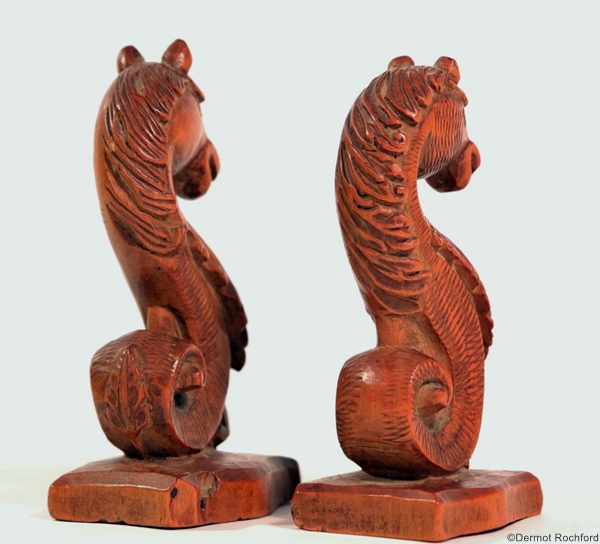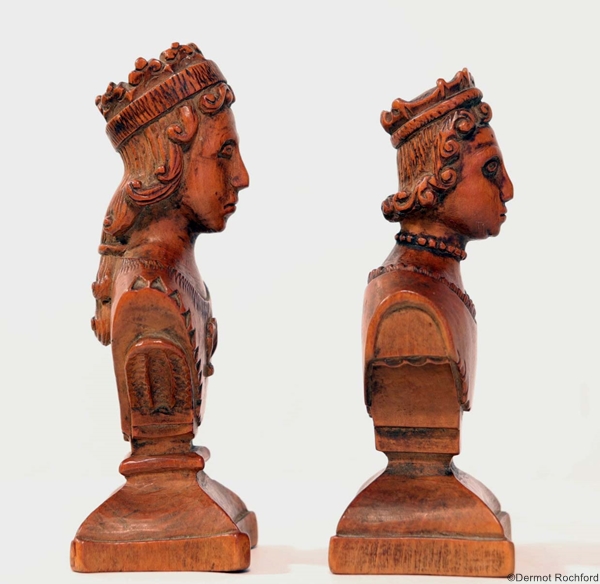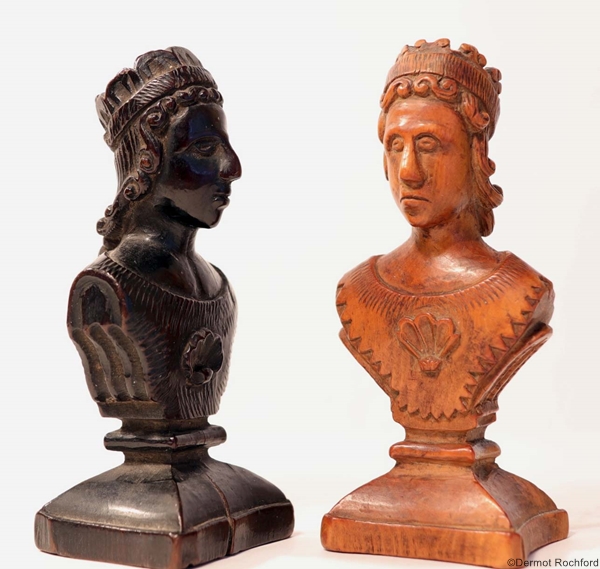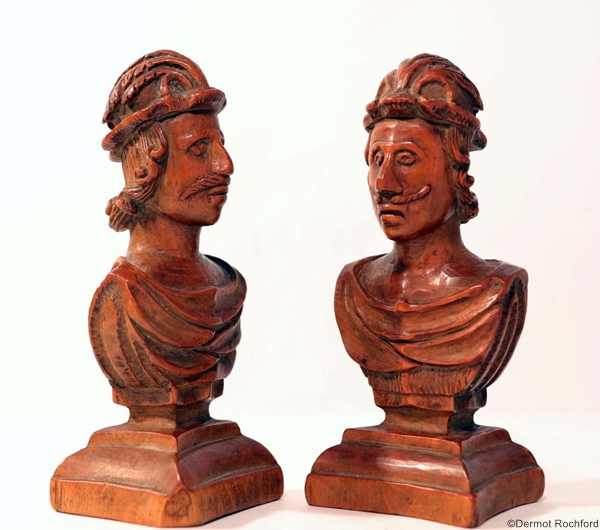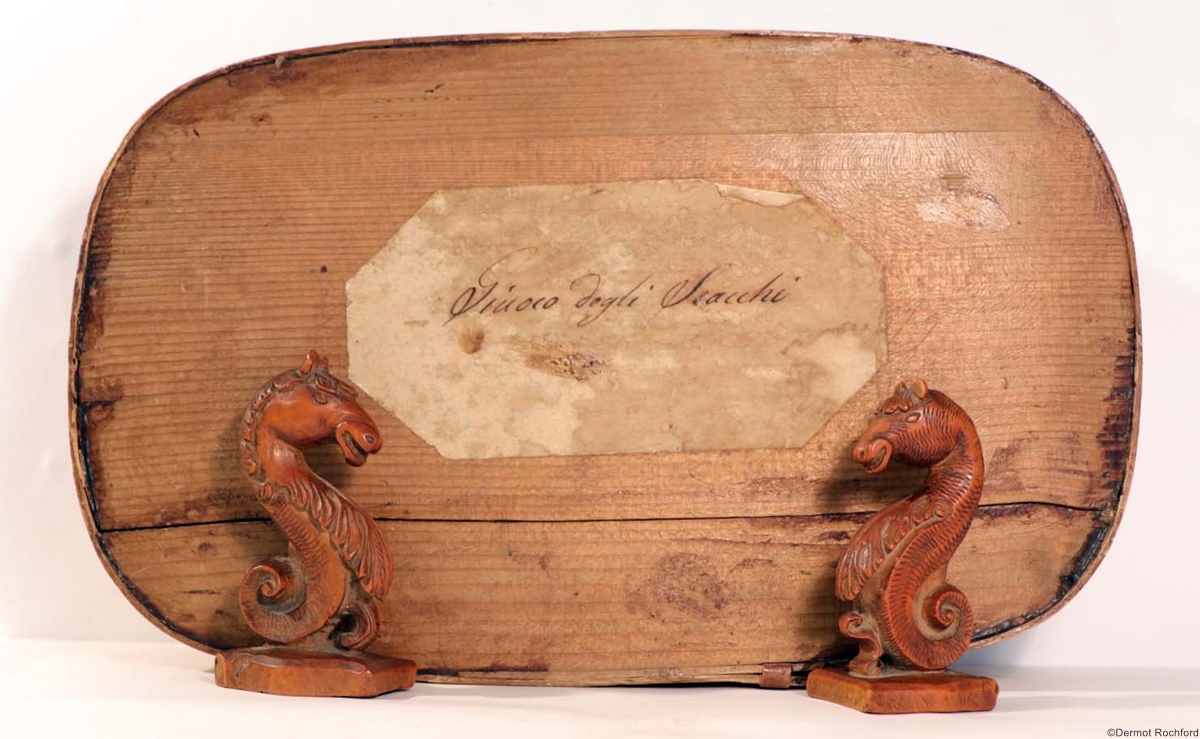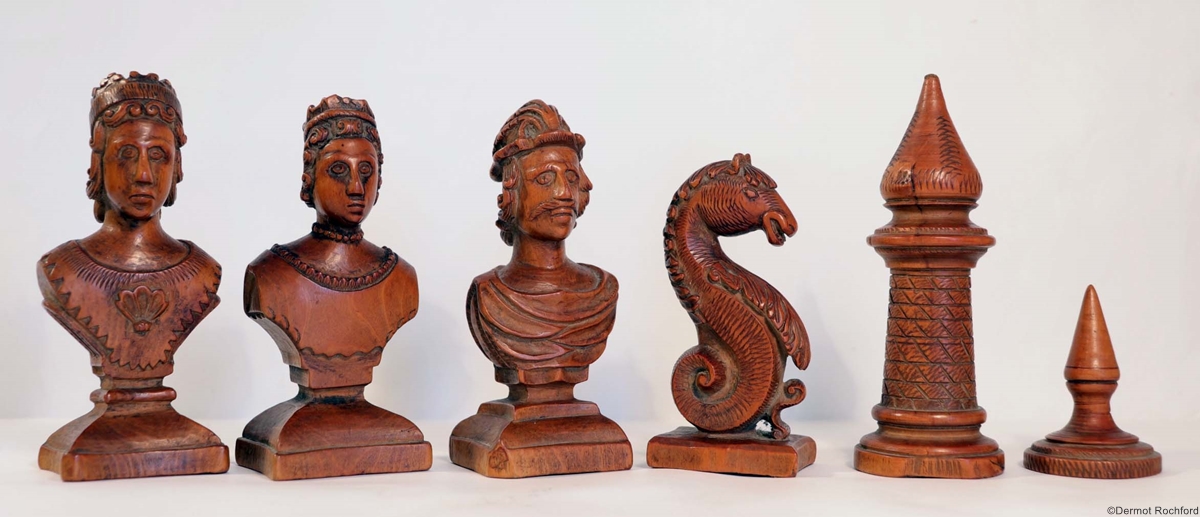
The underside of the white king, queen, bishop, rook and pawn have their names notated with ink in Italian (see image below) and the pieces have acquired a great surface patina over time. All the carved figural pieces on each side have individual characteristics. For example one bishop's mustache droops while that the other bishop's curves upwards. Both kings display a carved scallop motif on the chests - this motif has been a symbol of pilgrimage and spiritual transformation since medieval times.
It is noteworthy that, in the hand written inscription on the lid of the large bentwood box 'Giuoco degli Scacchi' (Game of Chess) the word 'Ciouco' is no longer used in modern Italian. The term 'Giuoco Piano' (Soft Game) relates in chess playing to the Italian opening developed by Pedro Damanio in the 16th Century.
As to provenance of this set and box - the previous owner stated that it had come from a noble Italian family and had been in that family for centuries.
He thought that the chess pieces could be older than the bentwood box in which they were housed.
There are still a lot of unanswered questions about this set needing more research. These include such matters as - Where did this distinctive design come from and is it referenced in any books, paintings or diagrams?
- Who was the carver (or workshop) who made the set.
- When exactly might it have been made. We are only aware of two other wood sets of this design.
- One of which is in our collection, F63 .
- Have the 'scallop' motif some meaning other than pilgrimage.
- Is the variation between pieces (e.g. bishop's mastaches) of any significance.
- Is the chess set and its box from the same period, unclear. (bentwood boxes came into use in the 14th century in Europe).
One of our new favorites, any references from others would be most welcome.

